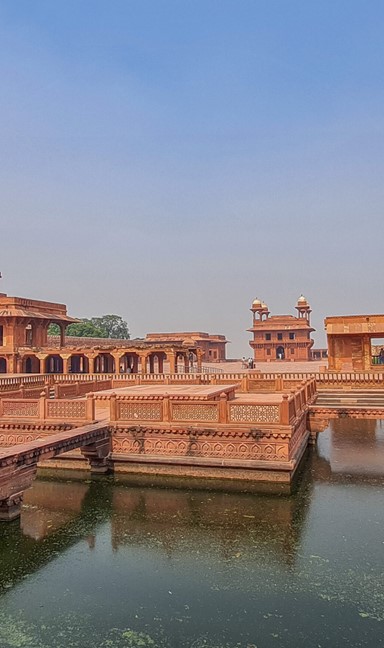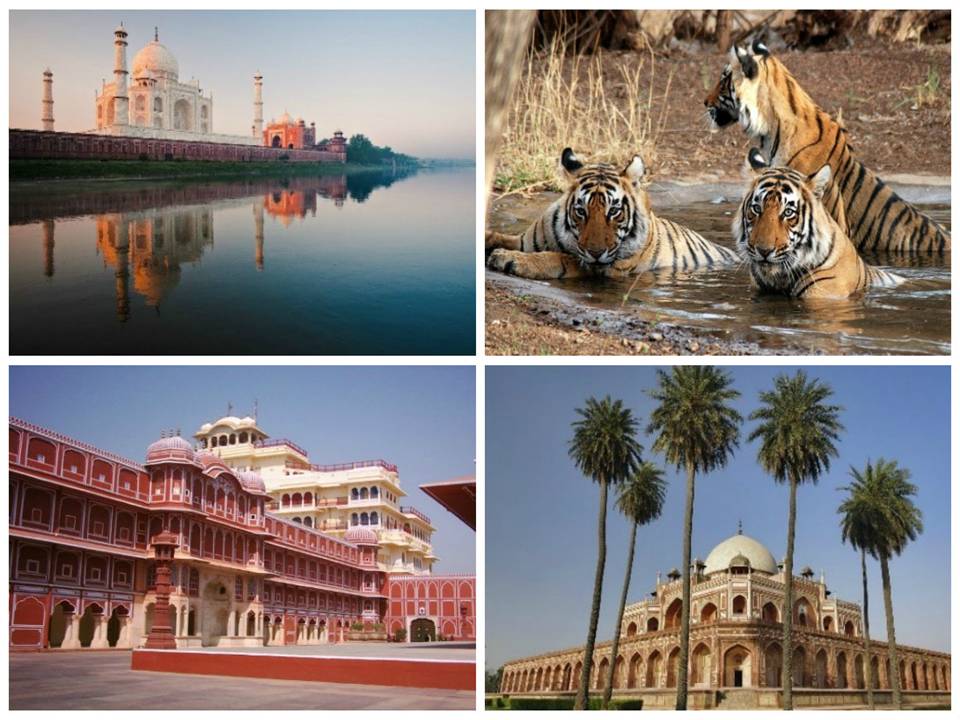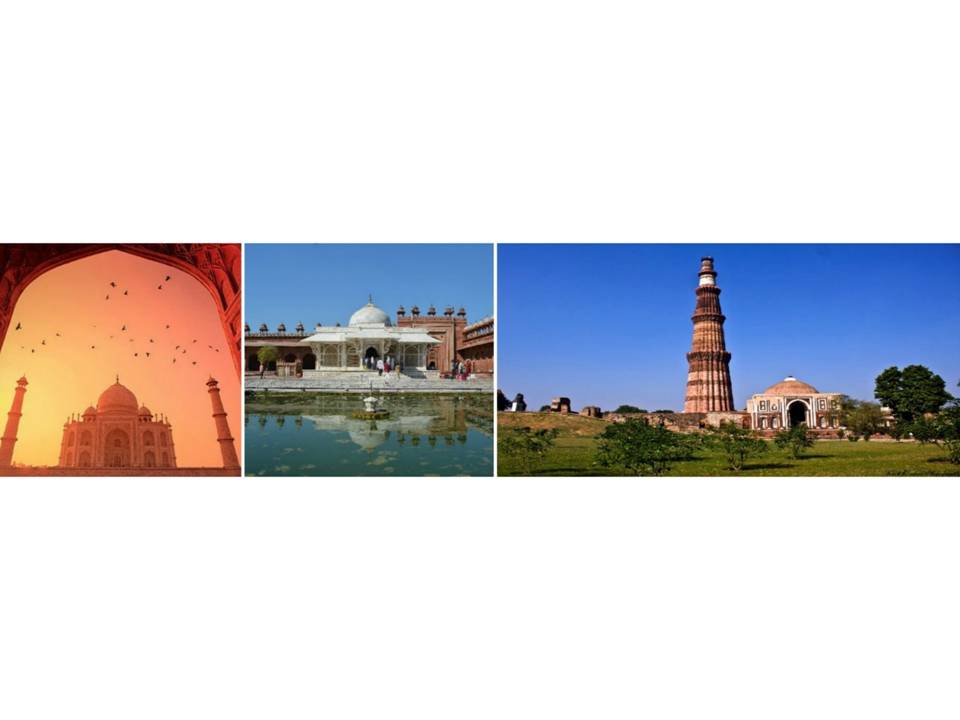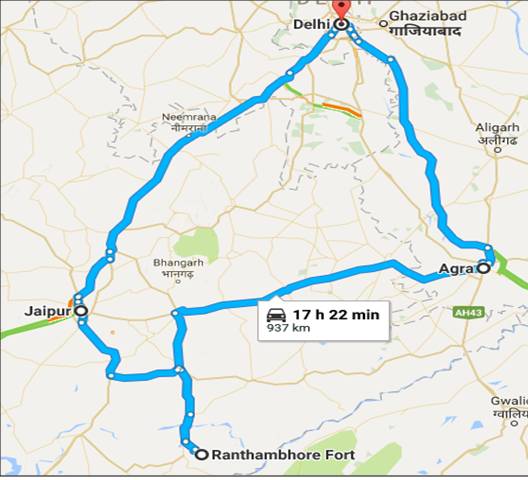Overview
Tour Type: Family,Honeymoon,Luxury,Romantic,Popular Destination,Historical placesJaipur: It evokes the royal family that once ruled the region and that, in 1727, founded what is now called the Old City, or “Pink City” for its trademark building color. At the center of its stately street grid (notable in India) stands the opulent, colonnaded City Palace complex. With gardens, courtyards and museums, part of it is still a royal residence.
Ranthambore
Today experience early morning and evening game drive in the Ranthambore National Park. Ranthambore Tiger Reserve lies on the junction of Aravali and Vindhyas. It sprawls over a varying and undulating landscape. The scenery changes dramatically from gentle and steep slopes of the Vindhyas to the sharp and conical hills of the Aravali. The tiger is not the only attraction at Ranthambore. A variety of birds including owlets, the ubiquitous langur (monkey), leopard, caracal, hyena, jackal, jungle cat, marsh crocodiles, wild boar, bears and various species of deer are the other attractions. Overnight in Ranthambore.
Taj Mahal
The magical allure of the Taj Mahal draws tourists to Agra like moths to a wondrous flame. And despite the hype, it’s every bit as good as you’ve heard. But the Taj is not a stand-alone attraction. The legacy of the Mughal empire has left a magnificent fort and a liberal sprinkling of fascinating tombs and mausoleums- The Taj was built by Shah Jahan as a memorial for his third wife, Mumtaz Mahal, who died giving birth.
The Taj was designated a World Heritage Site in 1983 and looks nearly as immaculate today as when it was first constructed
• Inside the Grounds
From both the east and west gates you first enter a monumental inner courtyard with an impressive 30m red-sandstone gateway on the south side.
The ornamental gardens are set out along classical Mughal char bagh (formal Persian garden) lines – a square quartered by watercourses, with an ornamental marble plinth at its center. When the fountains are not flowing, the Taj is beautifully reflected in the water.
The Taj Mahal itself stands on a raised marble platform at the northern end of the ornamental gardens, with its back to the Yamuna River. Its raised position means that the backdrop is only sky – a masterstroke of design. Purely decorative 40m-high white minarets grace each corner of the platform. After more than three centuries they are not quite perpendicular, but they may have been designed to lean slightly outwards so that in the event of an earthquake they would fall away from the precious Taj. The red-sandstone mosque to the west is an important gathering place for Agra's Muslims. The identical building to the east, the jawab, was built for symmetry.
The central Taj structure is made of semi-translucent white marble, carved with flowers and inlaid with thousands of semiprecious stones in beautiful patterns. A perfect exercise in symmetry, the four identical faces of the Taj feature impressive vaulted arches embellished with pietra dura scrollwork and quotations from the Quran in a style of calligraphy using inlaid jasper. The whole structure is topped off by four small domes surrounding the famous bulbous central dome.
Directly below the main dome is the Cenotaph of Mumtaz Mahal, an elaborate false tomb surrounded by an exquisite perforated marble screen inlaid with dozens of different types of semiprecious stones. Beside it, offsetting the symmetry of the Taj is the Cenotaph of Shah Jahan, who was interred here with a little ceremony by his usurping son Aurangzeb in 1666. Light is admitted into the central chamber by finely cut marble screens.
The real tombs of Mumtaz Mahal and Shah Jahan are in a basement room below the main chamber.
View: Visiting the Taj Mahal at Full Moon Nights - An Experience Like No Other in World
For further details go to see: https://www.tajmahal.gov.in/nightview.html

Tour Highlights
- Delhi - Jama Masjid, Qutub Minar, Humayun Tomb
- Delhi - Red Fort, Rajghat, President House & India Gate
- Chandni Chowk
- Agra – Taj Mahal, Agra Fort & Fatehpur Sikri
- Jaipur – Amber Fort, City Palace, Jantar Mantar Observatory & Hawa Mahal
- Elephant ride at Amber Fort
- Jungle Safari in Ranthambore National Park - not in rains
- Assistance at airport and sightseeing tours by private air-conditioned vehicle
Itinerary
Experience
Inclusion
What is included• 7 night accommodation in well-appointed rooms as mentioned above hotels or equivalent
• Assistance at the airport
• Elephant / Jeep ride at Amber
•Sightseeing as per itinerary by private tourist vehicle
• 2 Sanctuary Drive by Deluxe Canter (Sharing basis)
• Drivers allowances, toll taxes and Govt. Service Tax
Exclusion
What is not included• Air tickets and airport taxes
• Services of English-speaking guide during sightseeing tours
•Rickshaw ride in Chandni Chowk
• Entry Fee at the Monuments
• Items of personal nature like laundry, phone calls, tips to guides / drivers etc.
• Camera / Video camera fees applicable at monuments
NOTE:
Monuments Closed On
Agra - Taj Mahal on every Friday
Jaipur – Elephant ride at Amber Fort will not be operational during Eid /Navrataras Festivals
Ranthambore Park will be closed from July till September
Hotel Check in 1400hrs and check out 1200hrs
Medium vehicle will be provided for 1-3 travelers and Innova will be provided for 4-5 travelers
Package cost will not be valid during public holidays, festivals, exhibitions and long-weekends
A surcharge will be levied and will be advised at the time of bookingIf you are a foreigner
If you are a foreigner, once you get your ticket, you can skip ahead of the lines of Indians waiting to get in – one perk of your pricey entry fee. It's possible to buy your tickets online in advance at https://asi.payumoney.com (you'll get a ₹50 discount for your troubles), but you won't save much time as you still have to join the main security queue. A ticket that includes entrance to the mausoleum itself cost ₹200 extra.
Cameras and videos are permitted, but you can't take photographs inside the mausoleum itself. Tripods are banned.
Remember to retrieve your free shoe covers (included in Taj ticket price). If you keep your ticket, you get small entry-fee discounts when visiting Agra Fort, Fatehpur Sikri, Akbar's Tomb or the Itimad-ud-Daulah on the same day. Bags much bigger than a money pouch are not allowed inside; free bag storage is available. Any food or tobacco will be confiscated when you go through security, as will pens.


